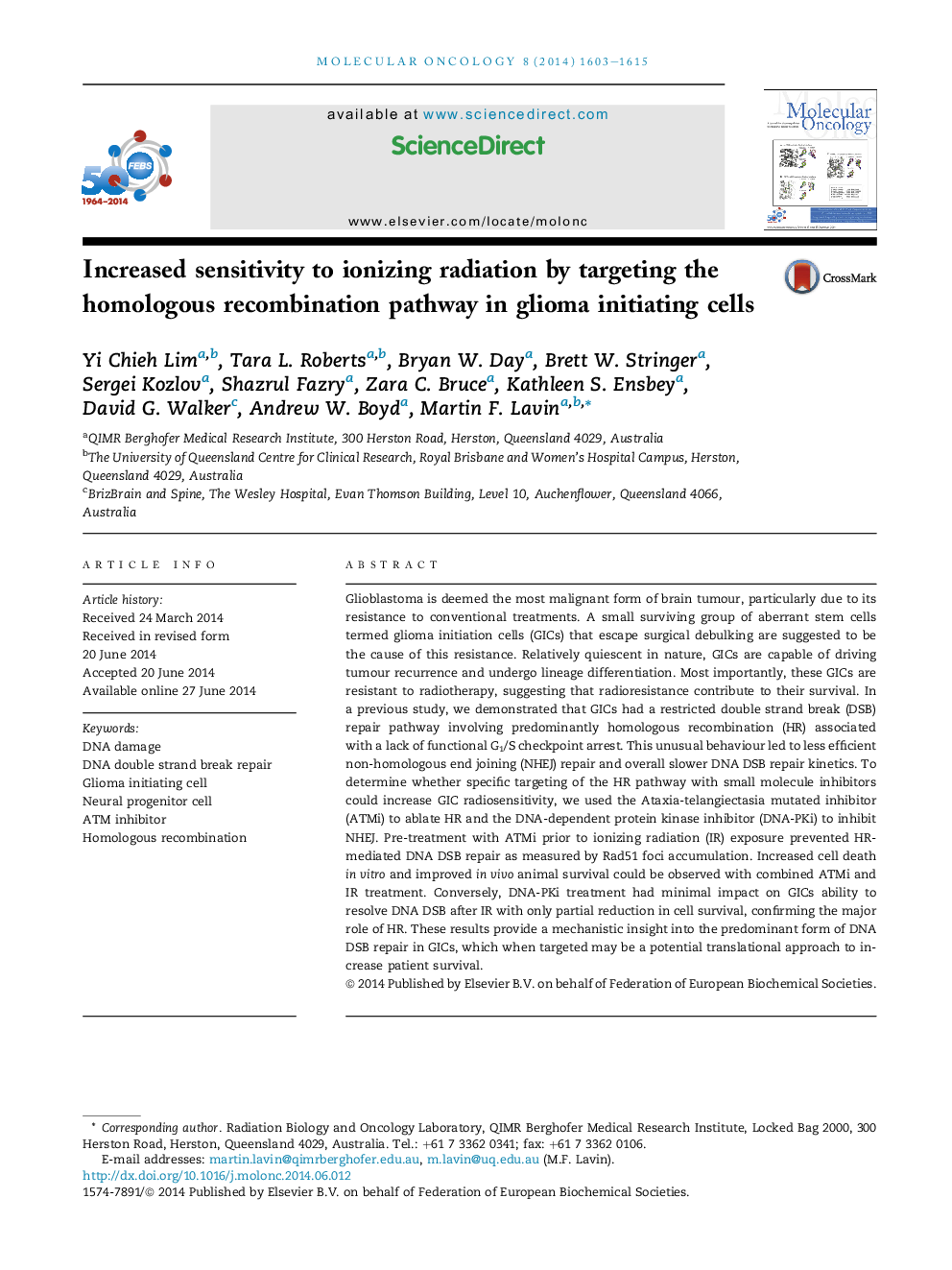| کد مقاله | کد نشریه | سال انتشار | مقاله انگلیسی | نسخه تمام متن |
|---|---|---|---|---|
| 10914875 | 1088822 | 2014 | 13 صفحه PDF | دانلود رایگان |
عنوان انگلیسی مقاله ISI
Increased sensitivity to ionizing radiation by targeting the homologous recombination pathway in glioma initiating cells
ترجمه فارسی عنوان
افزایش حساسیت به تابش یونیزه با هدف قرار دادن مسیر نوترکیب همولوگ در سلول های آغازین گلیوم
دانلود مقاله + سفارش ترجمه
دانلود مقاله ISI انگلیسی
رایگان برای ایرانیان
کلمات کلیدی
موضوعات مرتبط
علوم زیستی و بیوفناوری
بیوشیمی، ژنتیک و زیست شناسی مولکولی
تحقیقات سرطان
چکیده انگلیسی
Glioblastoma is deemed the most malignant form of brain tumour, particularly due to its resistance to conventional treatments. A small surviving group of aberrant stem cells termed glioma initiation cells (GICs) that escape surgical debulking are suggested to be the cause of this resistance. Relatively quiescent in nature, GICs are capable of driving tumour recurrence and undergo lineage differentiation. Most importantly, these GICs are resistant to radiotherapy, suggesting that radioresistance contribute to their survival. In a previous study, we demonstrated that GICs had a restricted double strand break (DSB) repair pathway involving predominantly homologous recombination (HR) associated with a lack of functional G1/S checkpoint arrest. This unusual behaviour led to less efficient non-homologous end joining (NHEJ) repair and overall slower DNA DSB repair kinetics. To determine whether specific targeting of the HR pathway with small molecule inhibitors could increase GIC radiosensitivity, we used the Ataxia-telangiectasia mutated inhibitor (ATMi) to ablate HR and the DNA-dependent protein kinase inhibitor (DNA-PKi) to inhibit NHEJ. Pre-treatment with ATMi prior to ionizing radiation (IR) exposure prevented HR-mediated DNA DSB repair as measured by Rad51 foci accumulation. Increased cell death in vitro and improved in vivo animal survival could be observed with combined ATMi and IR treatment. Conversely, DNA-PKi treatment had minimal impact on GICs ability to resolve DNA DSB after IR with only partial reduction in cell survival, confirming the major role of HR. These results provide a mechanistic insight into the predominant form of DNA DSB repair in GICs, which when targeted may be a potential translational approach to increase patient survival.
ناشر
Database: Elsevier - ScienceDirect (ساینس دایرکت)
Journal: Molecular Oncology - Volume 8, Issue 8, December 2014, Pages 1603-1615
Journal: Molecular Oncology - Volume 8, Issue 8, December 2014, Pages 1603-1615
نویسندگان
Yi Chieh Lim, Tara L. Roberts, Bryan W. Day, Brett W. Stringer, Sergei Kozlov, Shazrul Fazry, Zara C. Bruce, Kathleen S. Ensbey, David G. Walker, Andrew W. Boyd, Martin F. Lavin,
